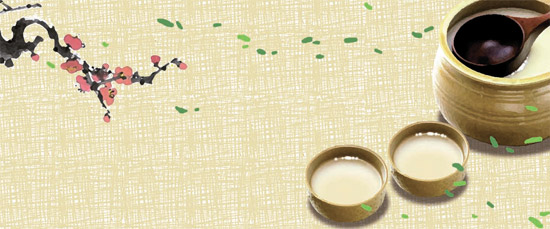Which liquor best represents Korea?

However, in modern society, alcohol can be a symbol of culture and a popular export item that defines a country’s image. European countries like France and other New World countries such as Australia, Chile and Argentina make money by exporting wines and create a graceful image at the same time. Germany and the Czech Republic are known for their beers. A Czech joke goes, an award-winning German beer was sent to a Czech beer-testing center, and it returned a report, “Your horse is in good health.” They claim even the best beer in another country is horse piss compared to Czech beer. The joke illustrates that alcoholic beverages can be linked to national identity and pride.
In Asia, China’s baijiu and Japan’s sake are well-known. Japan’s sake industry has imitated the Western wine industry, creating unique bottle and label designs and aggressive marketing campaigns with diverse tasting events and distillery tours. Japanese embassies worldwide are spreading the culture by offering sake and sushi to their guests.
India is emerging as an economic powerhouse, but it lacks notable traditional alcoholic beverages - possibly due to its high temperatures - while Indian food is popular internationally. Korea wants to globalize Korean cuisine but is struggling to find alcohol to create synergy. The rice wine makgeolli is too filling, and distilled soju lacks variety.
Poet Park Mok-wol wrote a poem with lyrics like, “Evening glow over villages brewing alcohol.” But the traditional brewing and distilling culture was lost during the Japanese occupation era.
Kang Hyoung-kee, a public administration professor at Chungbuk National University, and an expert in local autonomous administration, says that alcohol is a culture, a high-tech food and a product with high-added value. Grapes and berries bring three times more income as juice and six times more as alcohol, compared to when they’re used as fresh fruits.
Kang emphasized that we need to work on developing alcoholic beverages that can represent the country in order to vitalize our local economy and enhance our national image. He cited the example of Tokachi wine from Ikedamachi, a farming village in Tokachi County in Hokkaido, Japan.
The small village, with a population of 7,000, suffered from an earthquake in 1952 and poor harvests two years in a row. Then-village chief Ganeyasu Marutani, now 94, got an idea from local grapes and founded a local winery. After some trial and error, including cold weather completely freezing the grape vines, he successfully developed marketable wine in the 1970s.
In 1973, the village began a steak-and-wine festival, which celebrates its 40th anniversary this year. The wine-related profit is nearly 2 billion yen ($20.2 million). Now, Tokachi wine is known for its quality and is served to foreign heads of state.
Whether it’s wine or traditional liquor, we need to develop Korea’s alcoholic beverages. Just in time, President Park appointed Lee Dong-phil as the Minister of Agriculture, Food and Rural Affairs. Lee is known for his expertise in traditional liquor.
*The author is an editorial writer of the JoongAng Ilbo.
by Chae In-taek










with the Korea JoongAng Daily
To write comments, please log in to one of the accounts.
Standards Board Policy (0/250자)